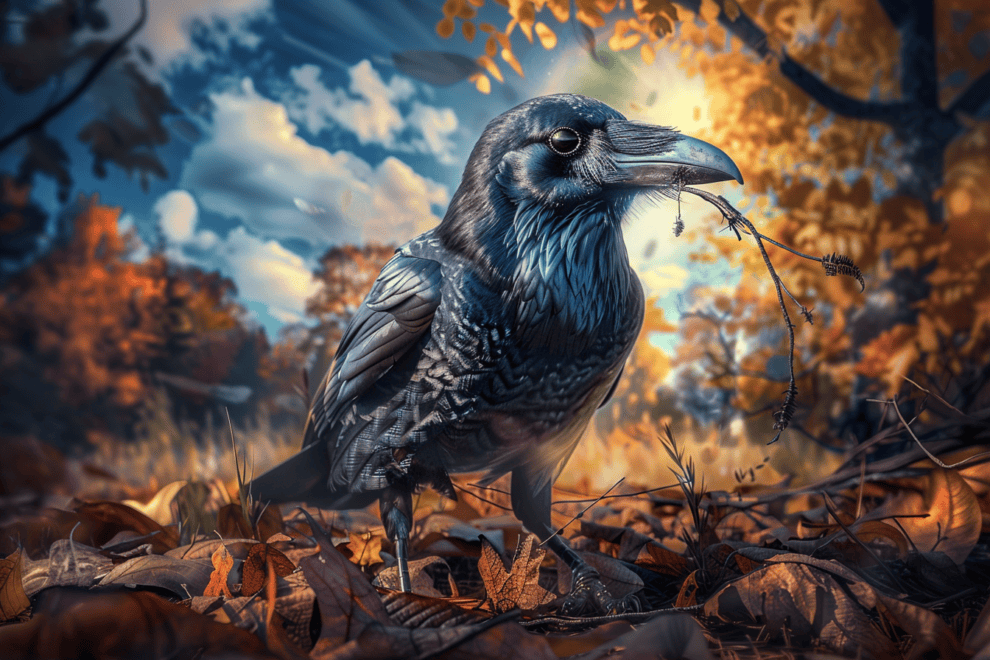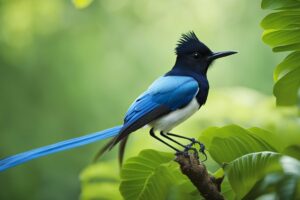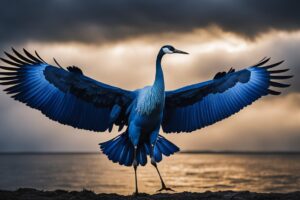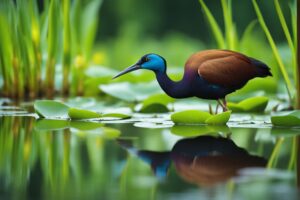New Caledonian crows possess problem-solving skills and tool-making abilities that rival those of early humans. These intelligent birds exhibit rare foresight, planning up to three future actions.
In various experiments, they have demonstrated their remarkable ingenuity by crafting tools, such as combining short sticks to extract food, showcasing their deep understanding of tool use.
Their impressive memory for tool locations and their ability to learn from older crows further emphasize their cognitive prowess.
This exceptional intelligence provides them with a significant evolutionary advantage, making New Caledonian crows an essential model for studying cognitive development.
Intelligence of New Caledonian Crows

New Caledonian crows are incredibly intelligent, known for their remarkable problem-solving skills. These birds possess advanced cognitive abilities, allowing them to plan up to three future behaviors.
When faced with a multi-stage problem; it can mentally map out each step needed to reach its goal. This kind of foresight is rare in the animal kingdom and sets them apart.
Their innovative behaviors are evident in how they tackle challenges. These crows don’t just react to their environment—they actively think ahead.
For instance, when presented with a task, they can visualize the sequence of actions required to solve it. This ability to pre-plan shows a level of mental sophistication and flexibility that many animals lack.
Understanding the intelligence of New Caledonian crows helps us gain insights into the evolution of cognitive abilities. By studying how these birds think and solve problems, researchers can draw parallels to human cognitive development.
These crows remind us that intelligence comes in many forms, often surprising us with the depth and breadth of their mental capabilities. It’s truly fascinating to see such complex behaviors in creatures we might otherwise overlook.
Experiments in Tool Use

In fascinating experiments, New Caledonian crows showcased their remarkable tool innovation skills.
Scientists presented these birds with puzzle challenges, such as extracting food from a box with a narrow gap. The crows had to think creatively, fashioning tools to retrieve the hidden treat.
In one experiment, researchers observed crows combining short sticks to create longer tools, demonstrating their careful attention to detail.
Without prior training, these birds ingeniously extended their reach, sliding the makeshift tools through the gap to access the food. This process highlighted their ability not only to use tools but also to innovate and adapt them to solve new problems.
The systematic way these crows approached each challenge provided valuable insights into their problem-solving capabilities. You’d be amazed to see how they analyzed the situation, chose appropriate materials, and crafted effective tools.
These experiments revealed that New Caledonian crows possess a thorough understanding of tool-making, showcasing their advanced mental abilities. Their knack for tool innovation in the face of puzzle challenges truly sets them apart as one of the most intelligent bird species.
Planning and Problem-Solving

Building on their impressive tool-making abilities, these crows also excel in planning and problem-solving, demonstrating remarkable foresight and cognitive prowess. New Caledonian crows can pre-plan three behaviors into the future, showcasing their advanced cognitive abilities.
When faced with cognitive challenges, these birds don’t just react impulsively; they exhibit a thoughtful approach, mapping out complex sequences of actions to achieve their goals.
Researchers have put these crows to the test with multi-stage problems that require sophisticated tool use. For instance, a crow might need to use a short stick to retrieve a longer stick, which can then be used to access food.
This step-by-step planning highlights their capacity to mentally represent and sequence behaviors, setting them apart as highly intelligent birds.
The crows’ behavioral strategies are fascinating to observe. They not only identify the tools they need but also plan the order in which they’ll use them. This ability provides valuable insights into the evolution of cognitive skills in animals.
Insights Into Animal Cognition

Researchers have uncovered fascinating insights into animal cognition by studying the complex tool-use behaviors of New Caledonian crows. These intelligent birds exhibit remarkable memory retention, enabling them to recall the locations of tools and resources over extended periods.
But it’s not just about individual intelligence; pivotal learning plays an essential role in their cognitive abilities. Young crows observe and imitate the actions of older, more experienced birds. This transfer of knowledge highlights their capacity to learn from others, a trait that’s often associated with higher cognitive functions.
When you watch these crows, you’ll notice how they refine their techniques over time, demonstrating a clear understanding of cause and effect.
Evolution of Cognitive Abilities

New Caledonian crows’ essential planning and tool-use abilities provide a window into the evolutionary development of cognitive skills.
These remarkable birds can pre-plan three behaviors into the future, a feat that showcases their sophisticated cognitive development. By studying these crows, we gain valuable insights into how planning might’ve evolved in both animals and humans.
Their knack for combining planning and tool use draws a fundamental link to human civilization, suggesting that these skills offer a significant evolutionary advantage.
Picture a crow methodically crafting a stick to fish out insects from a tree bark. This behavior isn’t just a sign; it’s a reflection of their cognitive prowess. These crows serve as a critical model species for understanding the evolution of planning skills.
Observing their problem-solving strategies helps unravel the mysteries of cognitive evolution, shedding light on how certain mental abilities have developed over time.
The story of the New Caledonian crow isn’t just about an intelligent bird; it’s a narrative that bridges the gap between animal behavior and human ingenuity.
Frequently Asked Questions
What Do Crows Typically Eat in the Wild?
Crows typically eat insects, small mammals, eggs, carrion, fruits, and grains. Their diet variation shows adaptability as they forage in fields, garbage dumps, and even raid crops. They often practice food storage for future use.
How Do Crows Communicate With Each Other?
You’ll find that crows communicate using vocalizations, body language, and visual signals. They use alarm calls to warn of danger and engage in mating rituals. Observing these behaviors reveals their social dynamics and intelligence.
Are Crows Found in Urban Environments?
Yes, you’re likely to find crows in urban environments. Their urban adaptation skills and resourcefulness allow them to thrive. Urban nesting provides plenty of opportunities for food and shelter, making cities ideal for these intelligent birds.
What Is the Average Lifespan of a Crow?
The average lifespan of a crow is around 7-8 years in the wild. Crow longevity can increase to 20-30 years in captivity due to controlled conditions. Lifespan factors include predation, accidents, and disease, affecting overall longevity.
Do Crows Migrate Seasonally?
You’re wondering if crows migrate seasonally. While some crow species have specific migration patterns, American Crows exhibit seasonal behavior by traveling short distances for food or weather, but they generally stay in their territories year-round.









